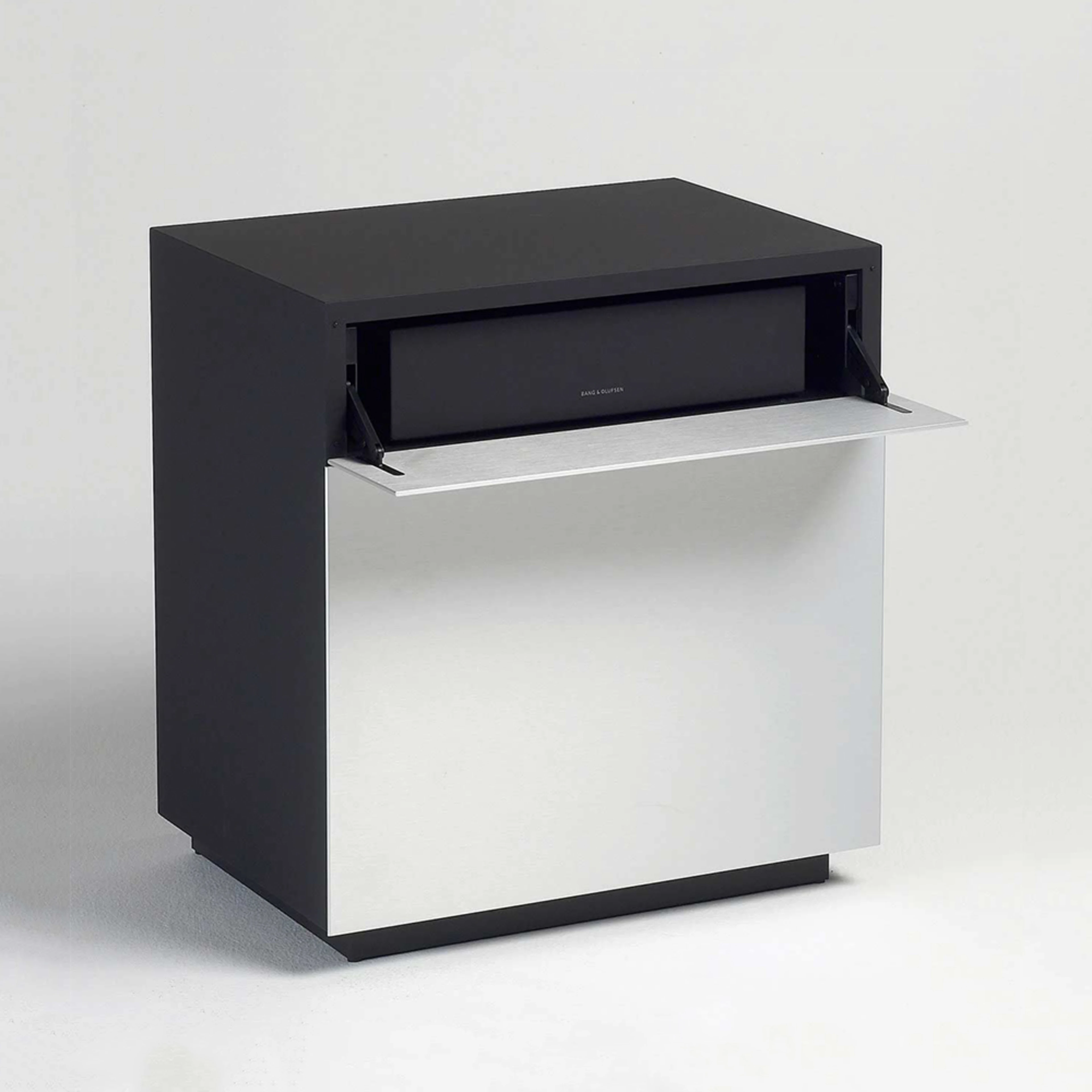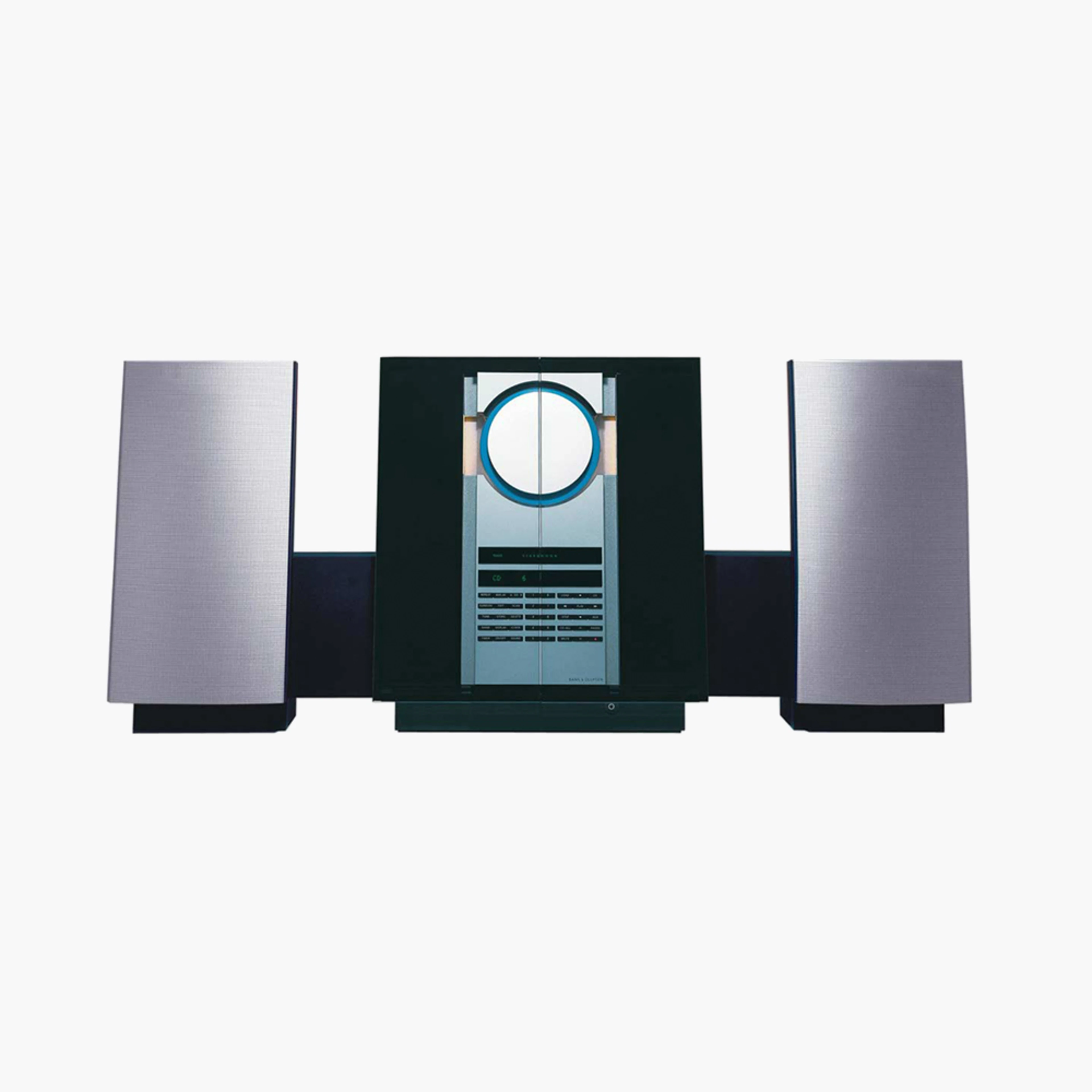Icons
David Lewis
How did a Brit end up in Denmark leading the design on one of the country's most esteemed companies? Read below and find out how David Lewis built upon the Bang & Olufsen legacy.
Music and poetry
“Form is nothing more than an extension of content,” David Lewis told Beolink Magazine in 2003. “Who says that loudspeakers should hide away in corners, if the closer they get to you, the better they sound?” It's quite telling that Bang & Olufsen's chief designer's words almost exactly paraphrase those of the American writer and poet Charles Olson, writing in his manifesto, Projective Verse – music and poetry are, after all, both vibrating air.
From London to Denmark
Lewis was born in Britain in 1939 and graduated from London's Central School of Art in 1960. Moving to Denmark a year later, he began working for Bang & Olufsen under the legendary designers Jacob Jensen and Henning Moldenhawer. His very first product was the Beovision 400 television set. His other early work included the Beolab 5000 system – as he assisted Jensen with its classic wood and aluminium design that won them the iF Design award in 1967. Other icons that came from Lewis include the Beosound 9000 CD player and the Beolab 5000.
David Lewis Designers
He founded his own practice, David Lewis Designers, in 1982 and throughout the rest of that decade, their designs were the core of Bang & Olufsen's output, especially as the company moved beyond stereo equipment and into the booming television market.
New frontiers
Innovations included the MX series, the first television sets designed by Bang & Olufsen. As ever, Lewis had a unique perspective. “As he sees it,” wrote Lewis’ right hand man at his studio in Copenhagen, Torsten Valeur, “when it's off, a TV is a cross between an aquarium and an eye peering into people's living rooms. Once the set is turned off, the design becomes paramount. Designing and creating a TV which also has a ‘life’ when turned off is the closest you can get today to giving consumers a good alternative to the empty aquarium.”
An evolution of elemental form
A recreated classic
The Beosystem 9000c is our latest Recreated Classic. Upgraded. Updated. Yet upholding all of its original elegance and power.
We’ve stripped the original Beosound 9000 to its core and rebuilt it from the ground up. Guided by design legend David Lewis’ original vision to proudly display your music, instead of hiding it in a black box.
Design that holds
Lewis was steeped in the idea that any product should have a long life, both in desirability and endurance. He believed in slow evolution, only producing new products when the customer really needed them, rather than tinkering with existing items and then relaunching with unnecessary fanfare. “Today there’s too much pressure, not just for designers. It’s disappointing in a way. You can miss cool things – afterthoughts, great little ideas – in the design process because it goes so fast,” he said in an interview with the Wall Street Journal. “We wouldn’t dream of doing something that wouldn’t hold. This is part of the culture.”
We wouldn't dream of making something that wouldn't hold. This is part of the culture.
David Lewis
Designer
This is reflected in the approach used by the Bang & Olufsen designers that Lewis led. Rather than shutting themselves away with humming computers in laboratory conditions, his team of six would only meet for a few days a month, before dispersing to develop ideas independently. His inspiration would often come from intensive thinking about the problems of any given object, as well as regular visits to art galleries, museums and Danish antique dealers specialising in mid-century furniture and architectural design.
At the time, they would almost entirely ignore digital design – Lewis once dismissed computers as being “Too inhibiting, too complicated to work with.” He preferred to let problems work themselves out as he sat with pieces of cardboard, paper and plastic, designing via model-making or, as he put it, following a more sculptural practice.
Stand your ground
Lewis was always ready to stand his ground to ensure that Bang & Olufsen's products were never aesthetically compromised but it was never about self-importance. In 2003, for instance, Bang & Olufsen CEO Torben Ballegaard Sorensen asked Lewis to add a few centimetres to the depth of the Beovision MX 8000 TV. The designer refused, and the CEO backed down. “If I had prevailed – if I could have easily forced a decision – I would have violated the very design integrity that gives us an advantage,” Sorensen told Fast Company magazine in 2003. This steadfastness of opinion had its advantages too, often forcing radical new developments in materials and engineering, such as pioneering the use of diamonds to cut aluminium.
Back to the original
Like his mentor Jacob Jensen, Lewis’ products have been selected for inclusion in the permanent collection of the Museum of Modern Art in New York. In his case, the selected designs were the video recorder, Beovox 5000, the Beovox Cona booster and the active speakers Beolab 6000.
Back in that 2003 interview, Lewis spoke about the core of the philosophy that had led to such a long and successful collaboration with the company. “I believe that the less you complicate things, the more interesting people will find them,” he said. “Let's clean up and simplify the technological mess. Let's go back to original ideas. Let's do it the Bang & Olufsen way.”
David Lewis: 1939-2011
Related stories
Join the House of Bang & Olufsen
Be the first to enjoy new and limited products, exclusive events, special offers and much more.



